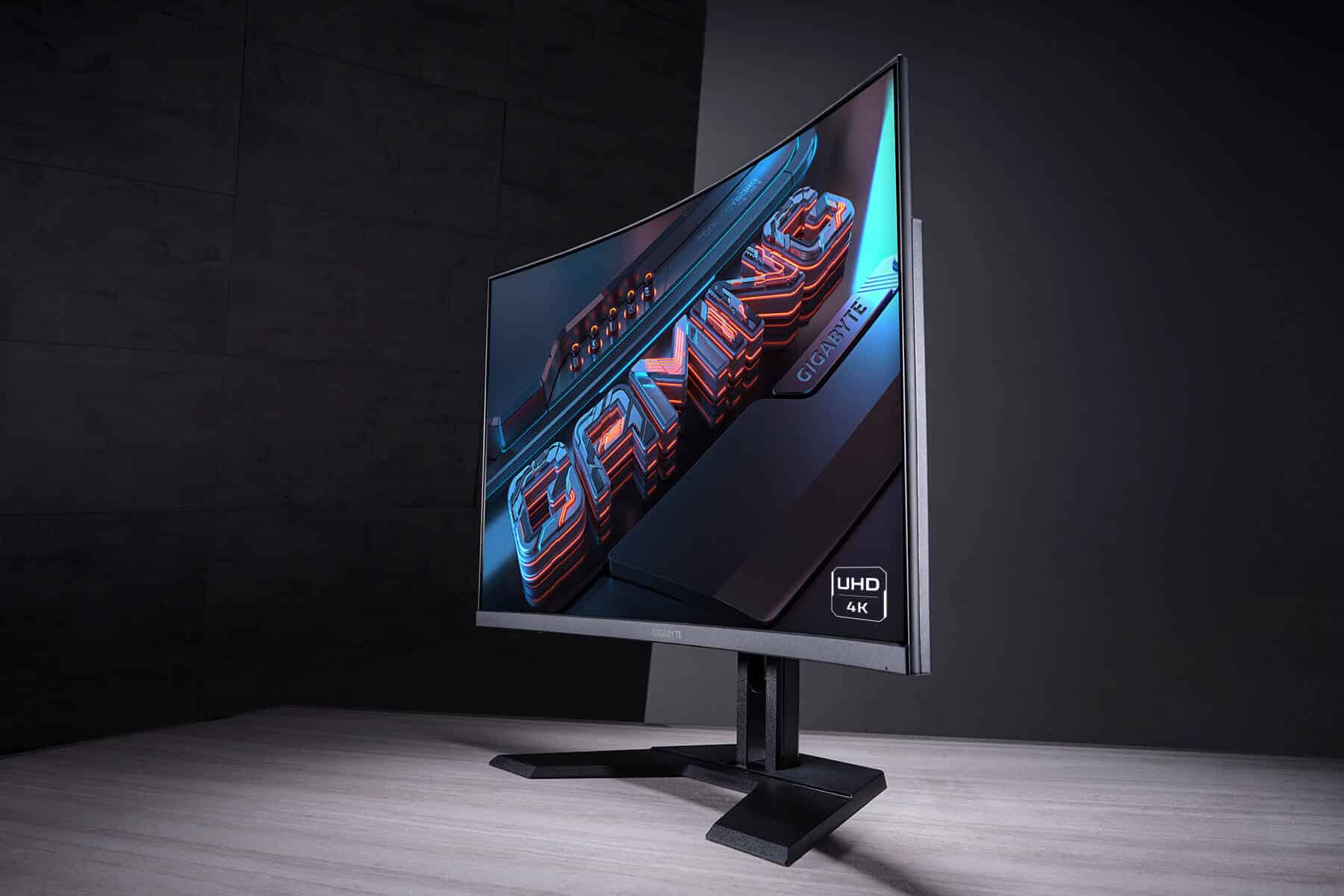Gaming monitors have become an essential part of a modern gamer’s setup, providing vibrant visuals and seamless gameplay. The clarity of a high-resolution display combined with the smoothness of high refresh rates makes gaming incredibly immersive. With advancements in display technology, there is now a wide range of monitors designed specifically for gaming, featuring technologies like adaptive sync to reduce screen tearing and low response times to minimize input lag.
When choosing a gaming monitor, you have to consider several key factors like the resolution it supports, the refresh rate, the panel technology, screen size, etc. The resolution is what determines the sharpness of on-screen content, with higher resolutions offering more detailed visuals. The refresh rate, measured in Hertz (Hz), impacts how smoothly motion is displayed, with higher rates reducing motion blur. Panel technology also affects color accuracy and viewing angles, with In-Plane Switching (IPS) panels generally being superior. Monitor size and aspect ratio also influence the gaming experience, with larger screens providing a more immersive feel and different aspect ratios potentially offering competitive advantages in specific game types.
Top 10 Gaming Monitors
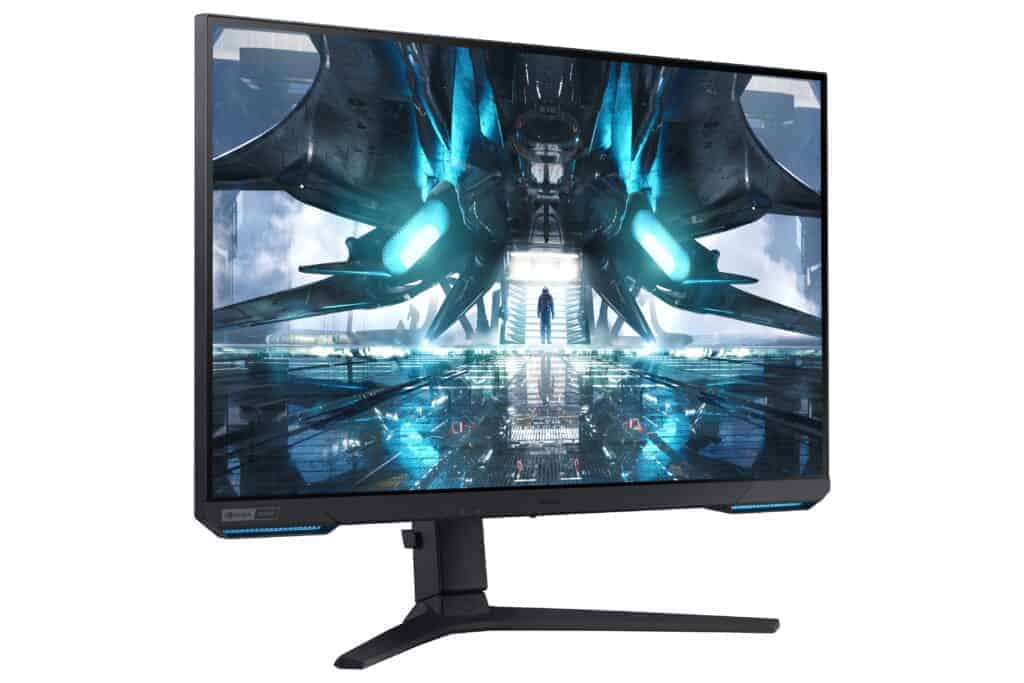
| Rank | Brand & Model | Screen Size & Type | Resolution | Refresh Rate | Response Time | Pros | Cons |
|---|---|---|---|---|---|---|---|
| 1 | Sceptre 30-inch Curved | 30″ Curved Ultra-Wide | Full HD | 200 Hz | 5 ms | Immersive curved design, high refresh rate, built-in speakers | Limited sharpness on large screen, fixed stand |
| 2 | Samsung 49″ Odyssey OLED Curved | 49″ Curved Ultra-Wide | Dual QHD | 240 Hz | 0.03 ms | Vibrant OLED, immersive design, ultra-fast response | Premium price, heavy, may prefer flat screen |
| 3 | Sceptre 24.5″ Curved 240Hz | 24.5″ Curved | Full HD | 240 Hz | 1 ms | High refresh rate, immersive curve, speakers | Full HD resolution, potential ghosting |
| 4 | AOC C27G2Z 27″ | 27″ Curved | Full HD | 240 Hz | 0.5 ms | High refresh rate, fast response, curved | Full HD resolution, limited adjustability |
| 5 | Sceptre 24-inch Curved | 24″ Curved | Full HD | 75 Hz | 8 ms | Curved display, connectivity options, speakers | Limited stand adjustability, lower speaker volume |
| 6 | ASUS VG248QG 24″ | 24″ Flat | Full HD | 165 Hz | 0.5 ms | High refresh rate, adjustable stand, Eye Care technology | TN panel color, weak speakers |
| 7 | Samsung 32″ Odyssey G55A | 32″ Flat | QHD | 165 Hz | 1 ms | Smooth gameplay, HDR10, rapid response | FreeSync Premium not for NVIDIA, large for some desks |
| 8 | LG 27″ UltraGear Monitor | 27″ Flat | Full HD | 165 Hz | 1 ms | High refresh rate, FreeSync Premium, borderless design | Standard FHD, minor backlight issues, color contrast |
| 9 | Sceptre 27-inch | 27″ Flat | Full HD | 100 Hz | 1 ms | Vibrant colors, connectivity, eye care | Basic speakers, stand design, limited adjustability |
| 10 | Alienware 27″ | 27″ Flat | QHD | 240 Hz | 1 ms | High refresh rates, accurate colors, adjustable stand | Premium price, potential backlight bleed |
Advanced Gaming Monitor Features
Remember to think about a few key things when choosing a gaming monitor. Compatibility with your graphics card, gaming-specific features like gaming mode or crosshairs, and connectivity options are important for avid gamers. These factors help you pick a monitor that meets your gaming needs and works well with your system. Choosing the right gaming monitor involves considering various factors like resolution, refresh rate, panel technology, and adaptive sync. Understanding these features and staying informed about new technologies helps you make a good decision. Finding the right gaming monitor can significantly improve your gaming experience. It’s important to balance performance with price and consider the types of games you’ll be playing. In the next section, we’ll look at different models that stand out in the gaming monitor market, offering options that meet different criteria and preferences to help you make an informed decision for your gaming setup.
Adaptive Sync Technologies
Adaptive sync technologies like NVIDIA G-Sync and AMD FreeSync help eliminate screen tearing by synchronizing your monitor’s refresh rate with your graphics card’s output.
- G-Sync: Developed by NVIDIA, G-Sync requires a dedicated module in the monitor for compatibility. It generally offers a wider variable refresh rate (VRR) range and smoother performance, but G-Sync monitors tend to be more expensive.
- FreeSync: Developed by AMD, FreeSync is an open-source technology that doesn’t require a dedicated module, making FreeSync monitors more affordable. However, compatibility and performance can vary.
Emerging Display Technologies
Mini-LED and Micro-LED
These newer display technologies offer improved contrast, deeper blacks, and better HDR performance compared to traditional LCDs. Mini-LED uses smaller LEDs for more precise backlighting control, while Micro-LED uses microscopic LEDs for even greater control and potential for higher resolutions.
High Refresh Rate OLED
OLED monitors with high refresh rates (240Hz or higher) are becoming more common. They combine the benefits of OLED (perfect blacks, infinite contrast, vibrant colors) with the smooth motion and responsiveness required for fast-paced gaming.
Additional Considerations
Variable Refresh Rate (VRR) Range
When choosing a monitor with adaptive sync, check its VRR range. This range specifies the refresh rates at which the technology can operate. Make sure the monitor’s VRR range overlaps with your graphics card’s output capabilities for optimal performance.
Input Lag
Input lag is the delay between when you perform an action (like pressing a button) and when it’s reflected on the screen. Low input lag is crucial for responsive gaming. You can measure input lag using specialized tools or look for monitors with advertised low input lag values.
Best Gaming Monitors For 2025
Gamers seeking top performance know the right monitor can make all the difference. We’ve gathered a selection of the finest gaming monitors that promise to display every frame of the action with perfect clarity and stunning visuals. Our recommendations are based on display quality, response time, and overall gaming features to suit various budgets and gaming needs. Whether you play fast-paced first-person shooters or visually rich open-world games, you’ll find a monitor here that fits your playstyle.
Sceptre 30-inch Curved Gaming Monitor

Gamers in search of a large, immersive display may find the Sceptre 30-inch monitor a strong contender due to its curved ultra-wide screen and high refresh rate.
Pros
- Immersive curved design enhances viewing experience
- High 200Hz refresh rate for fluid visuals
- Built-in speakers for convenient audio output
Cons
- Full HD on a 30-inch screen may affect sharpness
- Fixed stand limits adjustability
- Not ideal for color-critical work
Gamers will appreciate the expansive 21:9 aspect ratio that offers ample room for multitasking and a more immersive gaming experience. The curved display aims to provide a panoramic view, keeping the entire screen within the user’s field of vision. This feature is often appreciated by those who spend long hours in front of their monitors as it can create a more natural viewing experience.
With a significant boost to the refresh rate, up to 200Hz, users will notice less motion blur and smoother transitions in fast-paced games. Stutter and tearing can pull you out of the game, but with AMD FreeSync compatibility, the display’s refresh rate syncs with the graphics card’s frame rate to help reduce these issues. Such smoothness is especially beneficial in competitive gaming, where every millisecond can make a difference.
Keep in mind the trade-offs of having a large screen with Full HD resolution. At 30 inches, you may notice a decrease in pixel density, meaning some may perceive the image to be less sharp compared to smaller screens with the same resolution. For those needing a monitor that stays put, the included stand will do; however, those who desire movement might miss having the option to adjust height or swivel the screen to their liking. Also, if your activities require precise color representation, like photo editing, this monitor may not satisfy those needs due to its focus on gaming over color accuracy.
Despite these considerations, the Sceptre 30-inch curved monitor manages to bring together features that cater to a seamless gaming session. The inclusion of built-in speakers contributes to a cleaner desk setup, with less clutter from external audio devices, though dedicated speakers or headphones are recommended for a more robust sound experience. Overall, this gaming monitor is worthy of consideration for anyone looking to upgrade their visual setup for gaming and general use.
Samsung 49″ Odyssey OLED Curved Monitor
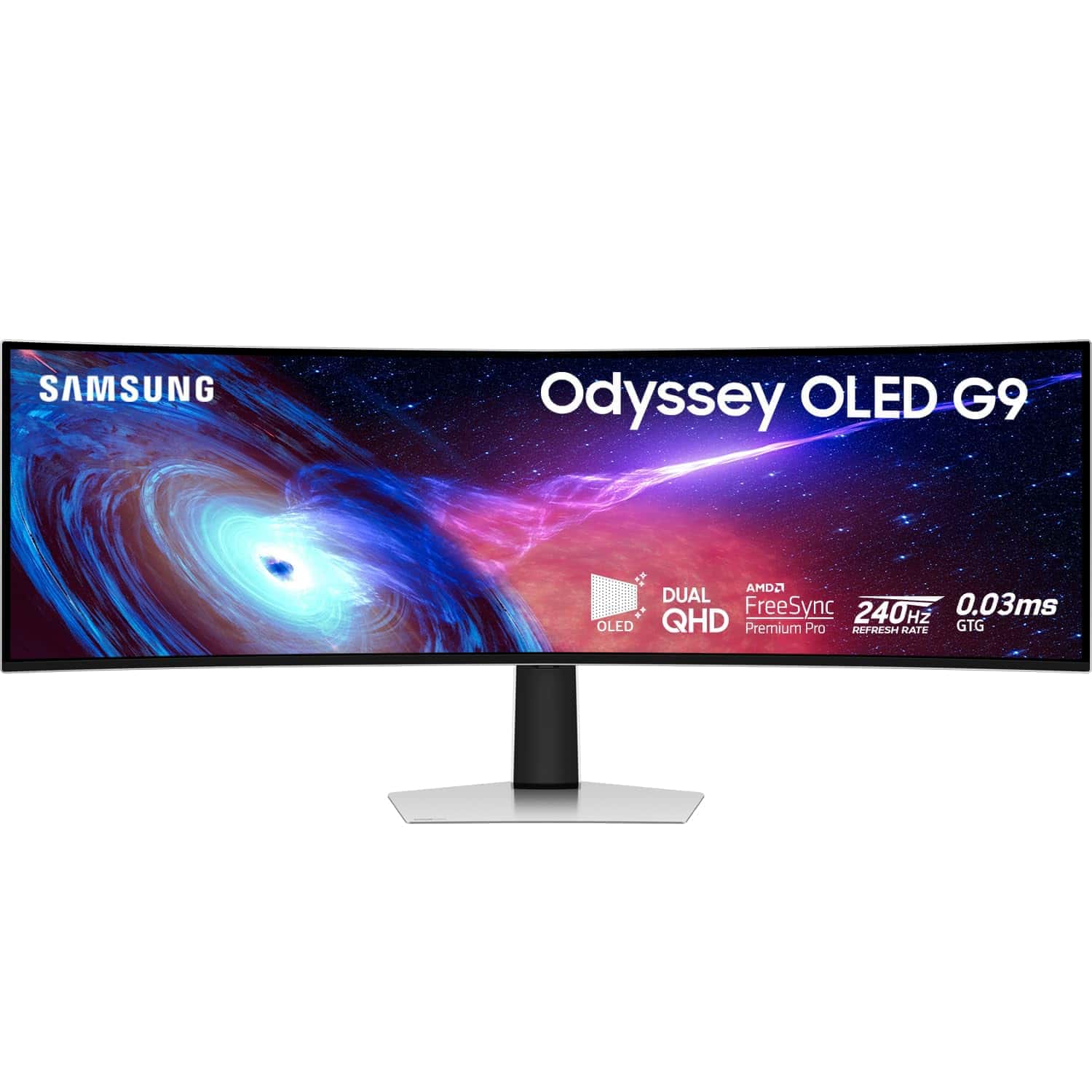
Gamers seeking an immersive experience will find this monitor’s curved design and rapid response time highly compelling.
Pros
- Vibrant OLED display with deep blacks
- Immersive 1800R curvature and super ultrawide format
- Ultra-fast 0.03ms response time and 240Hz refresh rate
Cons
- Premium price point
- Some users may prefer a flat screen
- Heavy weight could challenge some mounting setups
Choosing a gaming monitor is a critical decision for anyone looking to enhance their gaming setup. Samsung’s Odyssey OLED Curved Monitor stands out with its impressive display capabilities. The 49-inch Dual QHD screen delivers an expansive field of view, ideal for gamers who want to lose themselves in virtual worlds. The curvature of the monitor is designed to match the natural curvature of the human eye, offering a more comfortable viewing experience during extended gaming sessions.
An OLED display is known for its superior color contrast, showing true blacks and vibrant colors. This feature is especially noticeable in games with dark scenes, where details could be missed on other screens. Fast-paced games benefit greatly from both the 240Hz refresh rate and the rapid response time, ensuring seamless gameplay without motion blur. This monitor can give competitive players an edge, reacting as quickly as they do to in-game events.
It is important to consider the practicalities of integrating such a monitor into one’s setup. Its substantial weight and size call for a sturdy desk and may not be suitable for those with limited space. Despite the price being on the higher end, gamers who are serious about their experience will find the investment worthwhile for the visual quality and performance enhancements this monitor provides.
The Samsung Odyssey OLED Curved Monitor is curated for an audience that values fluid gameplay and cinematic visuals. It makes a significant statement both in terms of aesthetics and gaming prowess, providing an experience that traditional monitors cannot match.
Sceptre 24.5″ Curved 240Hz Monitor
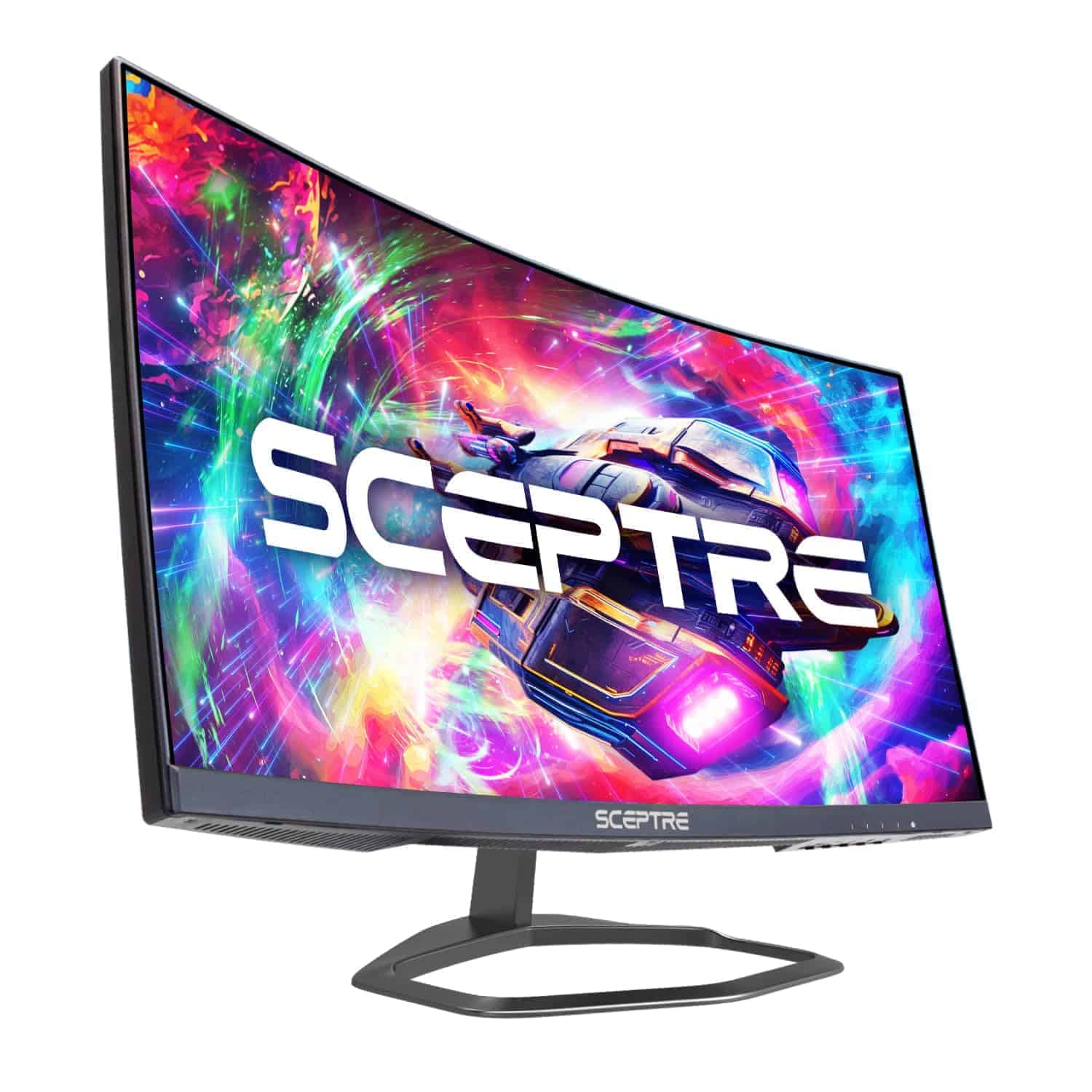
For gamers seeking smooth visuals and immersion, this monitor offers a solid balance between performance and features.
Pros
- High refresh rate for seamless gameplay
- Curved screen for an immersive experience
- Includes built-in speakers to save desk space
Cons
- Full HD resolution may not satisfy all users
- Some may experience ghosting during high-paced games
- Requires compatible hardware to utilize full refresh rate benefits
Gamers will find the 240Hz refresh rate instrumental in keeping visuals fluid, reducing motion blur and input lag. This paves the way for a more enjoyable gaming experience, especially during fast-paced action. Curvature of the display pulls you into the game, creating an encompassing field of view. This model comes with speakers, which is convenient for those who prefer a clutter-free workspace.
Despite its many strengths, the monitor’s resolution, while sharp, is not the highest available. Enthusiasts in pursuit of ultra-detailed visuals may look for higher resolutions. In certain games, some users might notice slight ghosting—a momentary trail left on the screen by moving objects. This can be a distraction, though many may not find it significant.
Compatibility is key when it comes to harnessing the full potential of the 240Hz refresh rate. Users will need to ensure their graphics card can handle the output, otherwise, the monitor’s capabilities can’t be fully realized. Those with appropriate setups will likely appreciate the noticeable difference a higher refresh rate makes.
To conclude, this Sceptre monitor stands out as a strong candidate for gamers who prioritize fluid gameplay and an engaging visual experience. With its curved design and high refresh rate, the pros outweigh the cons, making it an attractive choice for many. The inclusion of speakers adds value and convenience, rounding out its appeal as a comprehensive gaming display.
AOC C27G2Z 27″ Monitor

For those serious about gaming speed and performance, the AOC C27G2Z monitor is a strong choice.
Pros
- Exceptionally high refresh rate for fluid gameplay
- Ultra-fast response time minimizes motion blur
- Immersive 1500R curvature
Cons
- Full HD resolution may not satisfy all users
- Limited adjustability compared to some rivals
- Only has basic speakers
Gamers looking for blistering speed in their gaming display might find the AOC C27G2Z an impressive option. Its 240Hz refresh rate and 0.5ms response time are designed to reduce motion blur, providing a crisp image even in the most chaotic action scenes. This could give players a slight edge in competitive gaming scenarios where every millisecond counts.
The monitor’s 1500R curvature aims to provide a more engaging visual experience, wrapping the image around the gamer’s field of view. This curvature can contribute to an immersive gaming session, potentially allowing players to lose themselves in virtual worlds.
Featuring AMD FreeSync technology, screen tearing and stuttering are minimized, which translates into smoother visuals that sync well with compatible graphics cards. This synchronization is particularly valuable for gamers who demand seamless and uninterrupted visuals.
In terms of aesthetics, the monitor offers a frameless design on three sides, lending it a modern, almost floating appearance ideal for multi-monitor setups. Plus, with its height-adjustable stand, users can find a comfortable viewing angle that suits their seating position, reducing strain during long gaming sessions.
The 27″ display provides ample screen space, and while some may seek out higher resolutions, the Full HD (1920×1080) resolution maintains the focus on speed and a high frame rate, which is crucial for many gaming enthusiasts.
While the AOC C27G2Z monitor is designed with gamers in mind, the inclusion of merely functional built-in speakers means that for the best audio experience, external speakers or headphones are advisable.
Overall, the AOC C27G2Z monitor caters to those who value speed and performance in their gaming, offering features that could enhance gameplay substantially. It is a compelling option well worth considering for a gaming setup upgrade.
Sceptre 24-inch Curved Monitor
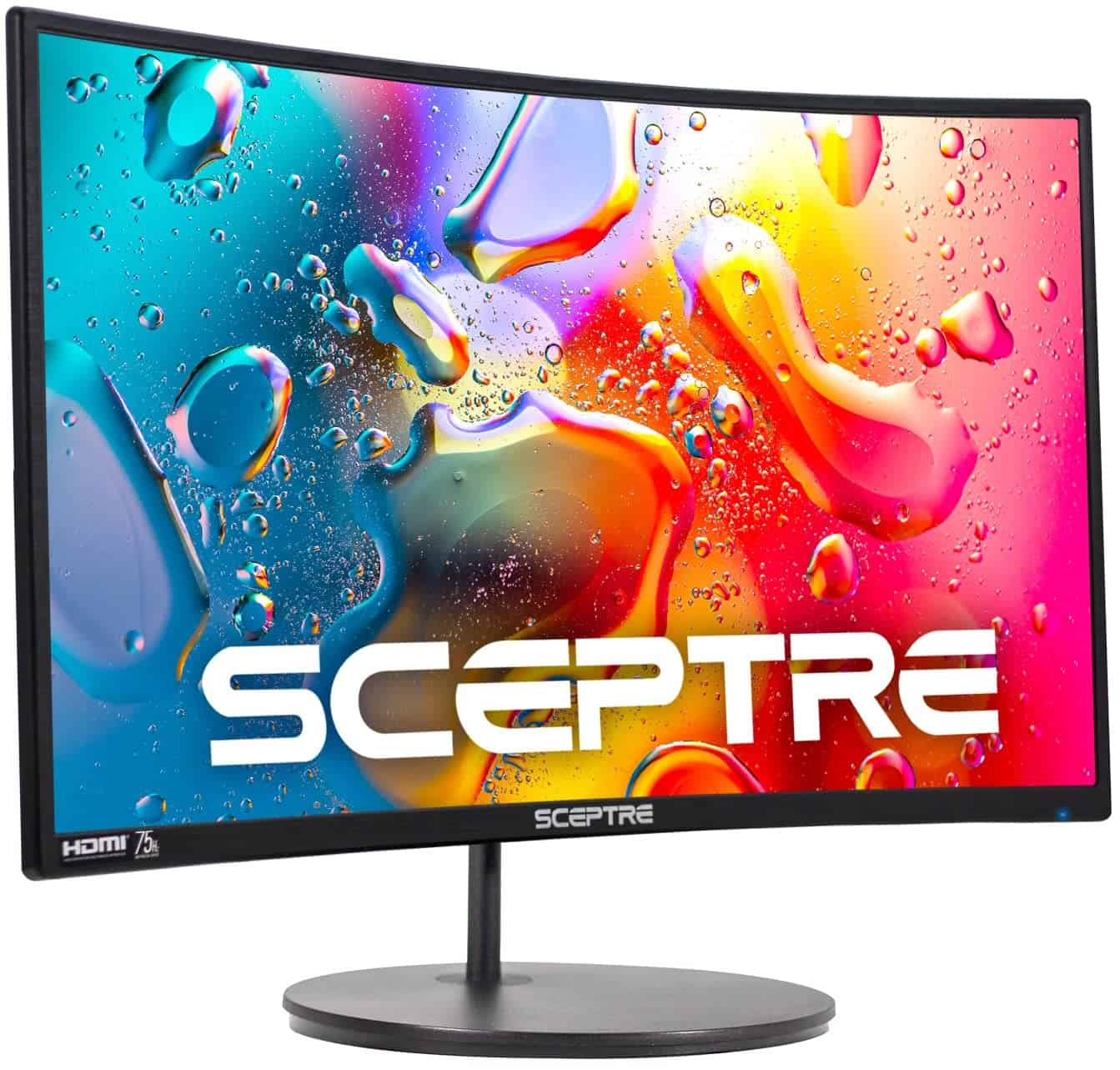
If clarity and immersion matter to you in gaming, this monitor could be a great match with its curved design and vibrant display.
Pros
- Immersive curved display enhances visuals
- Multiple ports for connectivity options
- Built-in speakers for integrated audio
Cons
- Limited adjustability in stand
- Speaker volume may not satisfy all users
- Curvature may not appeal to everyone
The Sceptre Curved 24-inch Monitor provides an encompassing viewing experience with its curved screen, drawing players into the heart of the action. This design creates a wider field of view and reduces eye strain during extended gaming sessions.
Inclusion of both HDMI and VGA ports gives users flexibility to connect various devices. This versatility ensures the monitor can easily integrate into most gaming setups, accommodating PCs, consoles, and other media devices without issue.
While the monitor comes with built-in speakers, those seeking a high-fidelity audio experience might find external speakers or headphones a beneficial addition. The onboard audio may suffice for basic use, but it cannot replace a dedicated sound system.
An aspect to consider is the monitor’s stand, which offers limited ergonomic adjustments. Some users might prefer a monitor with greater tilt, swivel, and height customization for optimal comfort and viewing angles.
Customers who prefer traditional flat screens should think carefully before opting for a curved monitor. The unique shape enhances immersion but differs from the flat screen experience some users may be accustomed to.
Overall, the Sceptre 24-inch Curved Monitor aligns well with gamers looking for an immersive visual experience backed by the convenience of multiple input options and acceptable color performance.
ASUS VG248QG 24″ Gaming Monitor
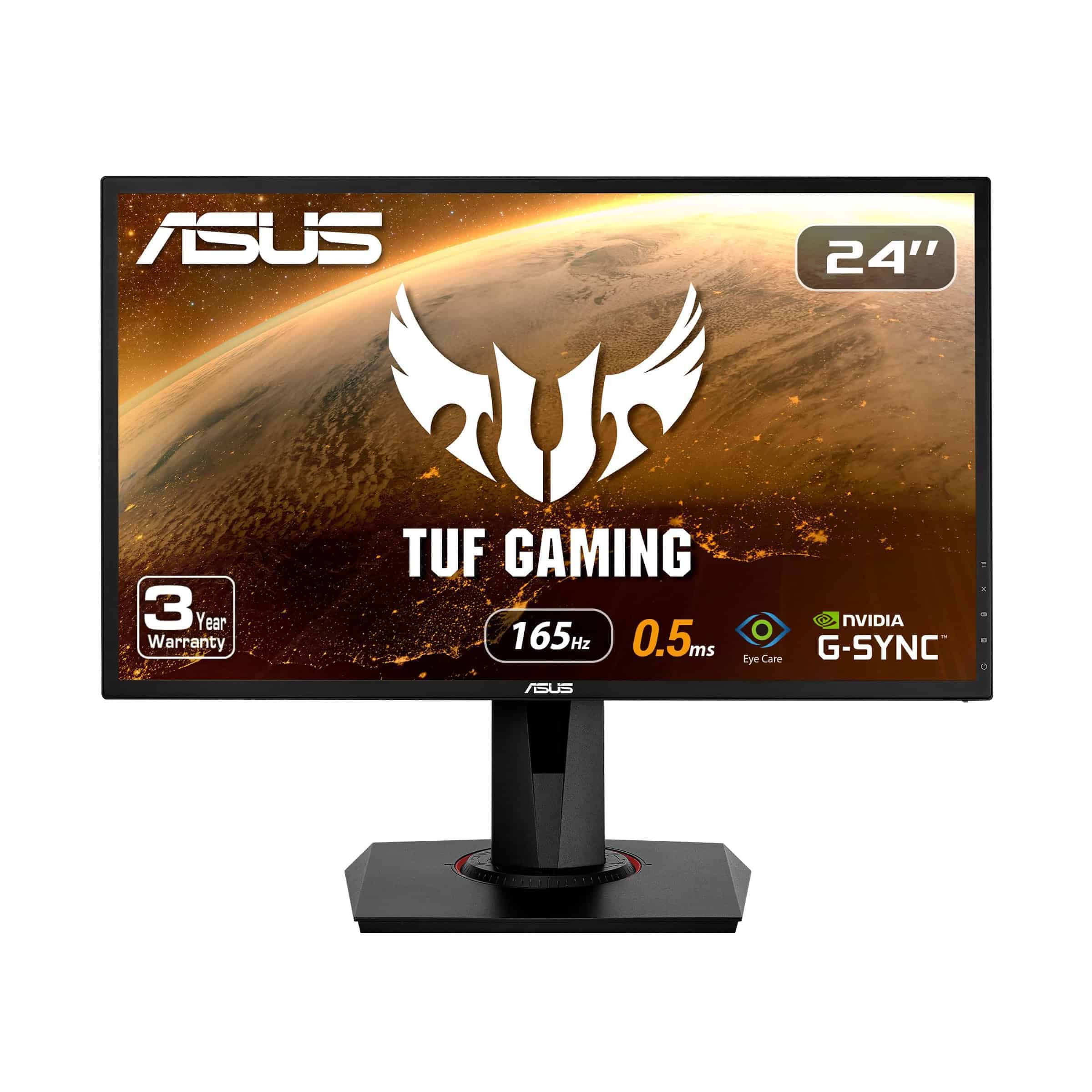
For gamers seeking smooth gameplay and comfort during long sessions, the ASUS VG248QG is a solid choice.
Pros
- High refresh rate for fluid visuals
- Adjustable stand for ergonomic comfort
- Eye Care technology for reduced eye strain
Cons
- TN panel may not offer the best color accuracy
- Built-in speakers lack power and clarity
- Some users reported saturation issues
The ASUS VG248QG offers performance that can please any avid gamer, featuring a high refresh rate that makes gameplay silk-smooth and a rapid response time that virtually eliminates lag. This monitor aims to deliver a competitive edge in fast-paced environments.
Comfort is also key with this device. It boasts an ergonomically-designed stand, allowing for extensive adjustments, including height, swivel, and tilt. This ensures users can find the perfect viewing angle, reducing physical strain during those marathon gaming sessions.
Eye fatigue is a common concern for gamers, and that’s where ASUS Eye Care comes in. The technology in this monitor helps minimize strain, incorporating a flicker-free backlight and a blue light filter. This could mean longer, more comfortable gaming without the drawbacks of extended screen exposure.
Despite the upsides, the ASUS VG248QG isn’t without its drawbacks. Its TN panel does fall short when it comes to color depth and viewing angles in comparison to IPS panels. Users searching for vibrant colors might find this aspect lacking.
Audio might not be the strong suit of the VG248QG, as the speakers deliver less than impressive sound. For optimal audio, external speakers or a quality headset would be preferable.
To sum up, although some users have noticed the colors aren’t as saturated as they’d like them to be, the monitor generally strikes a good balance between performance and comfort. However, for those with a keen eye for accuracy in color, this might not be the top pick.
Samsung 32″ Odyssey G55A
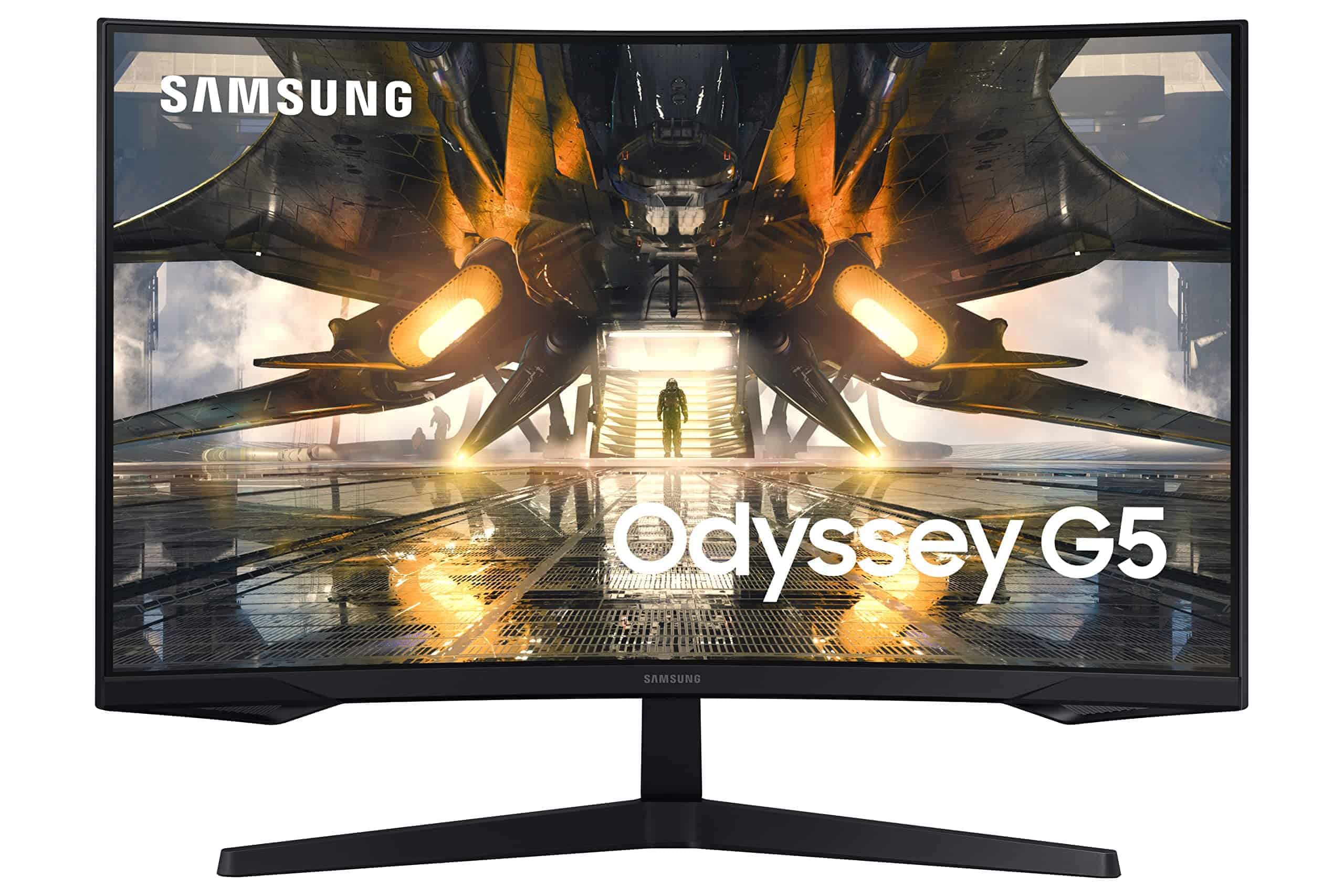
For competitive gamers seeking performance and immersive visuals, the Samsung Odyssey G55A offers a significant edge.
Pros
- Smooth gameplay with 165Hz refresh rate
- Rapid 1ms response for timely actions
- Striking details and colors with HDR10 support
Cons
- FreeSync Premium may not suit NVIDIA graphics card users
- 32-inch size could be large for small desks
- Design might not appeal to all tastes due to its futuristic look
Gamers often search for monitors that can match the speed and intensity of their gameplay. The Odyssey G55A is well-equipped for such challenges with its high refresh rate capable of producing smooth images even in the most action-packed moments. Timing is crucial, and the quick response time means users see the action unfold almost instantly, potentially improving their in-game reactions.
The beauty of a game is integral to the enjoyment for many players. This monitor uses HDR10 to create a rich palette of colors, making the gaming worlds more vibrant and lifelike. The high pixel density sharpens images, which could lead to a more immersive experience as players spot details they might otherwise miss.
However, gamers who prefer NVIDIA’s graphics cards might be unable to utilize the AMD FreeSync Premium to its fullest extent. The large screen size is impressive but may be overwhelming for those with limited space, potentially affecting the setup of a gaming station. Also, the monitor’s avant-garde design, while modern, may not align with everyone’s aesthetic preferences.
Overall, the Samsung Odyssey G55A is a robust choice for gamers who prioritize rapid and responsive gameplay with beautiful graphics. The monitor’s features focus on enhancing gaming sessions, making it a worthy consideration for someone’s next gaming upgrade.
LG 27GQ50F-B 27″ UltraGear Monitor

This LG UltraGear monitor is a solid choice for gamers seeking smooth visuals and responsive gameplay.
Pros
- High refresh rate for fluid gameplay
- Compatible with AMD FreeSync Premium for reduced screen tearing
- 3-side virtually borderless design for an immersive experience
Cons
- Standard FHD resolution might not satisfy users looking for 4K
- Some users may experience minor issues with the backlight
- Color contrast could be improved according to some feedback
Gamers who prioritize performance will find the high refresh rate advantageous for fast-paced games. The monitor offers a smooth, tear-free gaming experience due to its compatibility with AMD FreeSync Premium, a technology that synchronizes the monitor’s refresh rate with the GPU’s output. This minimizes stutters and screen tearing. Moreover, its 3-side virtually borderless design draws players into the action, creating an engaging and immersive user experience.
However, a few downsides should be considered. Although ideal for many users, the 1920 x 1080 resolution doesn’t quite meet the demands of those desiring 4K quality. Certain feedback indicates there can be occasional issues with the backlight not turning off completely, requiring users to switch the monitor on and off again. Additionally, despite the monitor’s overall solid performance, there are remarks suggesting the color contrast may not be as vibrant as expected.
Overall, the LG UltraGear monitor is designed to meet the specific needs of gamers, with a focus on speed and responsiveness. While the visual performance fulfills the requirements of most users, those with a keen eye for detail may find the color and resolution less satisfactory. However, the affordability combined with the technical capabilities makes it a strong contender for anyone looking to enhance their gaming setup without breaking the bank.
Sceptre 27-inch E275W-FW100T Gaming Monitor
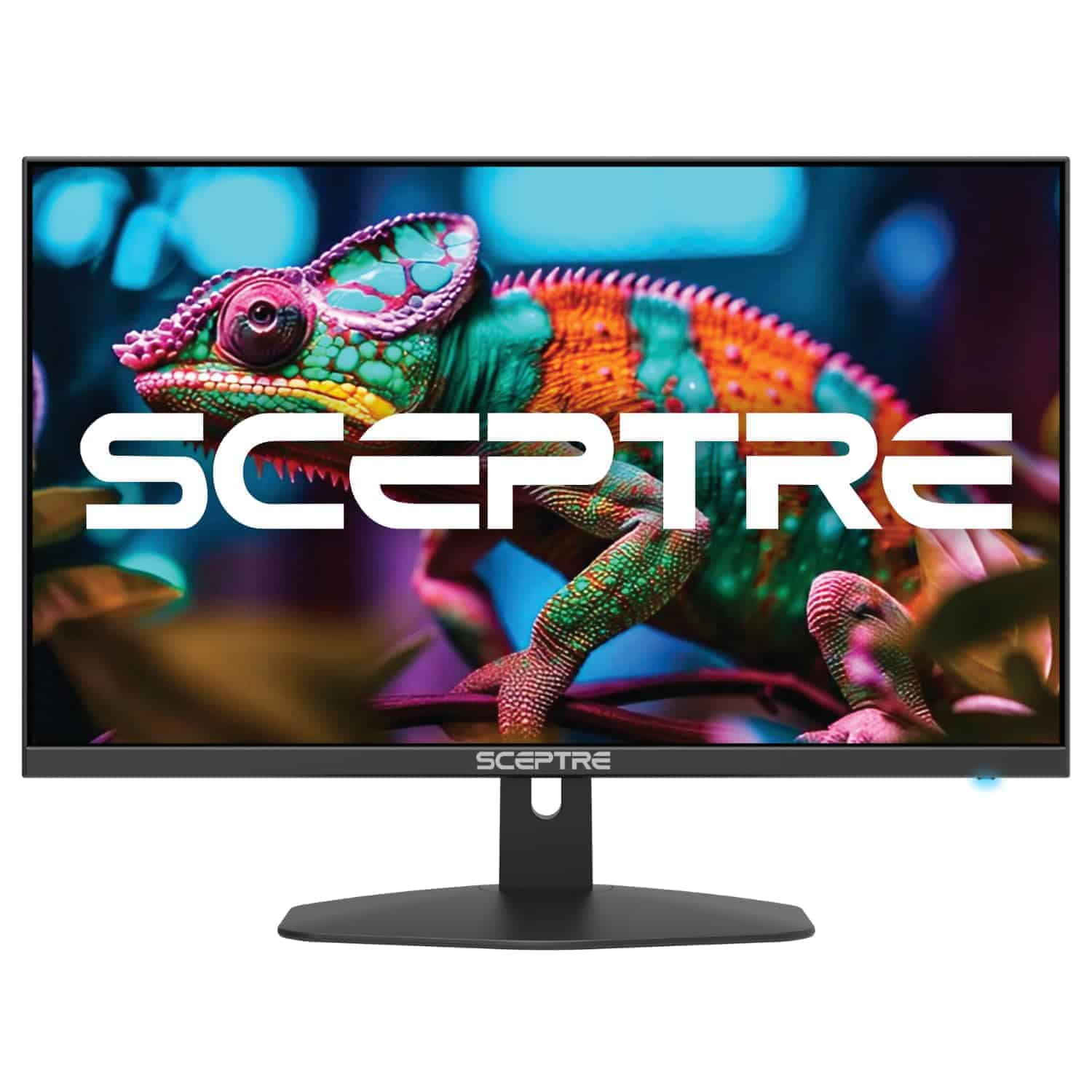
Purchasers looking for an affordable gaming monitor with essential features may consider this Sceptre model.
Pros
- Vibrant color performance due to 100% sRGB coverage
- Versatility with multiple ports including HDMI and DisplayPort
- Eye care technology to minimize eye strain during extended use
Cons
- Built-in speakers lack depth in sound quality
- Stand design could be improved for better stability
- Limited adjustability options for the screen
With an impressive color range, the Sceptre 27-inch monitor caters to those who value visual fidelity in games and creative projects. Offering a 100Hz refresh rate, it balances the needs of casual gamers and everyday use, providing a smooth viewing experience without the hefty price tag of high-end monitors.
Despite these benefits, the monitor reveals some areas of compromise, such as its sound system. Users may feel the need to invest in external speakers for a fuller audio experience. Additionally, the stand may leave some desiring more robust support and adjustment features to tailor their viewing angle.
Overall, customers show contentment with the monitor’s performance, especially considering its cost. Shoppers seeking a balance between price and capability may find this product a fitting choice. The full HD display renders sharp images, and with FreeSync support, it synchronizes well with compatible graphics cards to reduce image tearing. This monitor could serve as a strong contender for a multi-functional display solution in the market.
Alienware 27″ AW2723DF Gaming Monitor
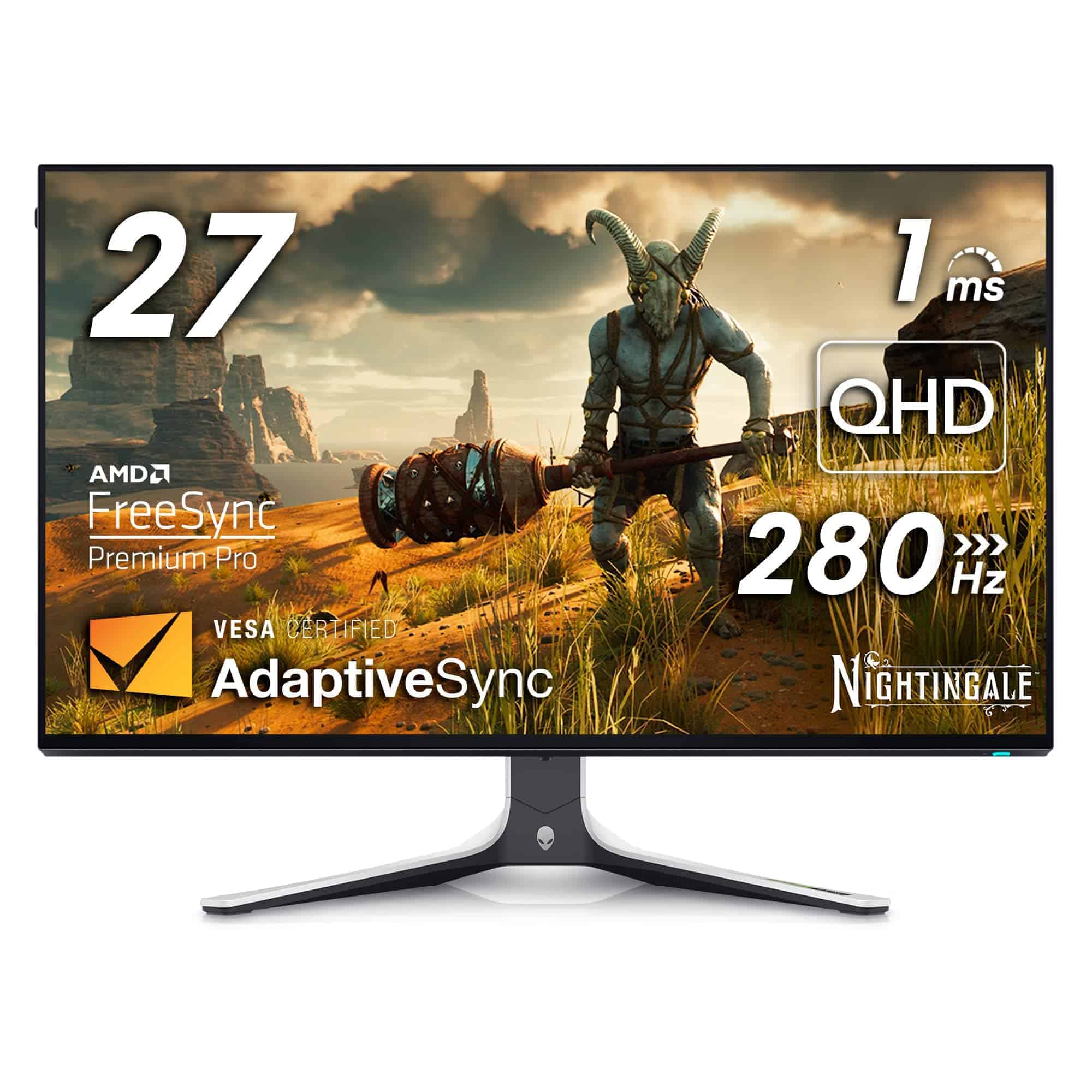
For gamers seeking performance and visual quality, this monitor is a solid choice.
Pros
- High refresh rates for fluid gameplay
- Accurate and vivid colors with wide viewing angles
- Fully adjustable stand for comfort and versatility
Cons
- Premium price point
- Potential for backlight bleed as reported by some users
- Limited use beyond gaming due to specific design and features
People in search of a stellar gaming experience will find the Alienware AW2723DF offers performance-focused features. Its high refresh rates promise to keep action smooth, which is invaluable in fast-paced games. The monitor’s ability to produce a broad spectrum of colors enhances the immersion, making game worlds appear more lifelike and vibrant to the viewer. This display device also includes a stand featuring several adjustments to cater to different heights and viewing angles, ensuring comfort over extended play sessions.
Any significant investment comes with high expectations, and this monitor’s price tag means it’s not for those who are budget-conscious. While it excels in gaming scenarios, some buyers have reported issues with backlight bleed, which could detract from dark scenes in games or movies. Additionally, the monitor’s game-centric design and capabilities may not lend itself as well to non-gaming tasks, which could be a downside for users who wish to use the monitor for a variety of applications.
Designed for gaming enthusiasts, the Alienware monitor’s Nvidia G-Sync compatibility aims to eliminate annoying screen tearing, and with a rapid response time, it keeps gameplay sharp without motion blur. The practical design elements, such as the robust stand and minimalist bezel, contribute to a sleek setup that fits well into any modern gaming station. This product is well-suited for people who spend a lot of time gaming and are looking for a balance between high-speed performance and visual fidelity.
Buying Guide
Resolution and Panel Size
| Feature | Description | Why it Matters |
|---|---|---|
| Resolution | The number of pixels that compose the display. | Higher resolution offers clarity. |
| Panel Size | Measured diagonally in inches. | Larger screens provide immersion. |
Refresh Rate and Response Time
| Feature | Description | Why it Matters |
|---|---|---|
| Refresh Rate | How often the screen refreshes per second. | Higher rates lead to smoother motion. |
| Response Time | Speed at which pixels change from one color to another. | Faster times reduce motion blur. |
Connectivity Options
| Feature | Description | Why it Matters |
|---|---|---|
| Video Inputs | Types of connections available (HDMI, DisplayPort, etc.). | Compatibility with your devices. |
| Additional Features | USB ports, integrated speakers, or headphone jacks. | Enhanced functionality. |
Panel Technology
| Feature | Description | Why it Matters |
|---|---|---|
| Panel Types | Main types include IPS, TN, and VA. | Each offers different levels of color and viewing angles. |
Color Accuracy and Gamut
| Feature | Description | Why it Matters |
|---|---|---|
| Color Accuracy | How closely the colors on the screen match reality. | Essential for graphic design and video editing. |
| Color Gamut | Range of colors the monitor can display. | Wider gamuts offer more vivid and diverse colors. |
When choosing the best gaming monitor, you should consider several features that impact your gaming experience. Resolution and panel size play significant roles in how immersive and detailed your games will be. Refresh rate and response time are critical for fluid and blur-free action. Connectivity options will ensure the monitor works with your gaming setup while panel technology affects viewing angles and color reproduction. Lastly, color accuracy and color gamut are important for a vibrant and true-to-life display, especially in games with rich and complex visuals. Each feature contributes to the overall performance of the monitor, so consider what matters most for your gaming needs.
How To Pick The Ultimate Gaming Monitor
| Feature | Importance | Explanation | Tips |
|---|---|---|---|
| Screen Size & Resolution | High | Bigger screens offer immersion, higher resolutions mean sharper details. Find the balance for your viewing distance and desired sharpness. | 24-32″ common; 1080p good for esports, 1440p for balance, 4K for stunning visuals. |
| Refresh Rate | High | How often the screen updates per second. Higher refresh rates (Hz) mean smoother, tear-free gameplay, especially in fast-paced games. | 144Hz+ ideal for competitive gaming, 75Hz+ okay for casual play. |
| Response Time | High | How fast the pixels change color. Lower response times (ms) reduce motion blur, crucial for fast-paced games. | 1ms-5ms ideal for competitive gaming, 5ms-8ms okay for casual play. |
| Panel Type | Medium | IPS offers good color accuracy and viewing angles, VA offers better contrast but lower viewing angles, TN is fastest but has color limitations. | IPS best for most, VA good for dark environments, TN for budget options. |
| FreeSync/G-Sync | Medium | Technologies that eliminate screen tearing by synchronizing the refresh rate to the graphics card. | Important for high frame rate gaming to avoid tearing. |
| Curved vs. Flat | Low | Curved screens offer a more immersive experience, but some find them distracting. | Personal preference, try both if possible. |
| HDR | Low | High Dynamic Range offers deeper blacks and brighter whites, but not all games and monitors support it. | Nice-to-have for immersive visuals, not essential. |
| Ports & Features | Low | Ensure the monitor has the ports you need (HDMI, DisplayPort) and any desired features (speakers, USB hub). | Check compatibility with your PC. |
Bonus Tips:
- Consider your budget and prioritize features that matter most to you.
- Read reviews and watch comparisons before buying.
- Adjust settings to optimize the monitor for your specific game and preferences.
- Take breaks to avoid eye strain, even with a great monitor!
Remember, the “ultimate” monitor is subjective and depends on your needs and preferences. Use this table as a guide to find the perfect match for your gaming setup!

Top Brands:
- Acer
- Asus
- Dell / Alienware
- LG
- Samsung
- BenQ
- HP
- Iiyama
Frequently Asked Questions
Choosing the right gaming monitor can significantly enhance your gaming experience. These FAQs will touch upon key aspects such as features to look for, the impact of refresh rate, the gains of a 4K monitor, budget-friendly options for competitive gaming, the benefits of OLED technology, and how to select the ideal monitor size for your space.
What features should I look for in a gaming monitor?
A good gaming monitor should have a high refresh rate and low response time. Look for monitors with adaptive sync technologies like NVIDIA G-Sync or AMD FreeSync to reduce screen tearing.
How does monitor refresh rate affect gaming performance?
The refresh rate, measured in hertz (Hz), refers to how many times the monitor updates with new images each second. Higher refresh rates lead to smoother gameplay, and are particularly beneficial in fast-paced games.
What are the benefits of a 4K gaming monitor?
A 4K monitor provides incredibly clear and detailed images thanks to its high resolution. This makes games look more lifelike and can improve your immersion in the game world.
Are budget gaming monitors good for competitive gaming?
Certain budget gaming monitors offer high refresh rates and low response times, which are crucial for competitive gaming. However, they may lack some premium features such as wider color gamuts or high dynamic range (HDR).
What is the advantage of OLED in gaming monitors?
OLED technology delivers fantastic contrast with true blacks and a wide color spectrum. This creates a vibrant, dynamic picture that can improve the visual experience in games, making dark areas and shadows more pronounced and colors more vivid.
How do I choose the right size gaming monitor for my setup?
Consider your desk space and how close you sit to the screen. Larger monitors can provide a more immersive experience, but they also require you to move your head and eyes more to see the entire screen. Monitors around 24 to 27 inches are often preferred for their balance between size and usability.
What Are The Best Aspect Ratios For Gaming?
- 16:9: The most common aspect ratio, suitable for most games.
- 21:9: Ultrawide format, offering a wider field of view and more immersive experience, especially in racing or simulation games.
- 32:9: Super ultrawide format, providing an even wider field of view, but may require turning your head to see the entire screen.
Curved vs. Flat When It Comes To Gaming
- Curved: Offers a more immersive experience and can reduce eye strain for some users.
- Flat: More traditional, better for multi-monitor setups, and preferred by some for competitive gaming.
Does Monitor Calibration Matter?
Calibrating your monitor ensures accurate color representation. You can use hardware calibrators or software tools to adjust color settings and achieve optimal visual fidelity.

